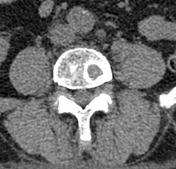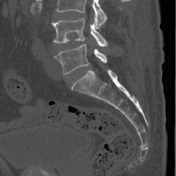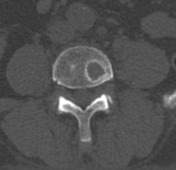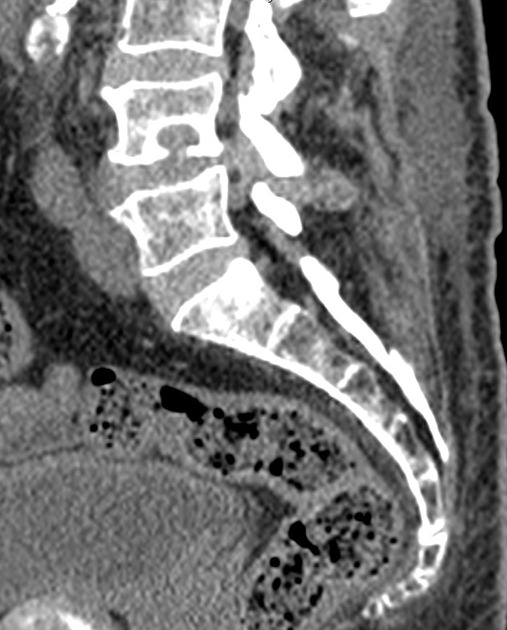Presentation
Incidental finding.
Patient Data
Age: 50 years
Gender: Male
Note: This case has been tagged as "legacy" as it no longer meets image preparation and/or other case publication guidelines.




Download
Info

A well demarked and big Schmorl node is observed on the inferior endplate of L4.
Case Discussion
Schmorl nodes are commonly observed in the spine of elderly patients and represent a protrusion of intervertebral disc tissue into the vertebral body.




 Unable to process the form. Check for errors and try again.
Unable to process the form. Check for errors and try again.